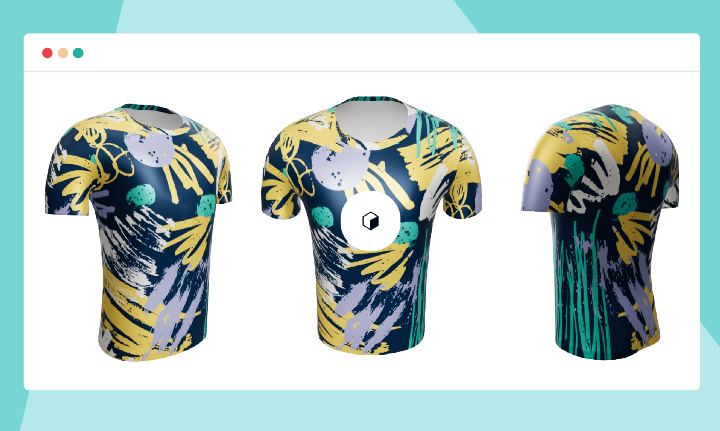Since the introduction of online marketplaces in the late ’90s, the world of e-commerce has been steadily gaining momentum. And the pandemic only accelerated this upward trajectory: in the U.S. alone, e-commerce sales increased by $244.2 billion (a whopping 43%) in 2020. Last year, e-commerce sales worldwide amounted to approximately $4.9 trillion, and that number is expected to grow by 50% by 2025.
What does this mean for global businesses? To capitalize on this booming market and stay relevant, it’s essential to keep up with budding e-commerce trends. Staying informed enables retailers to jump on industry innovations more easily, and best position their companies for success.
Below are three key trends that are shaking up the world of e-commerce right now:
1. Social commerce
The fusion of social media and e-commerce is probably the most buzzworthy trend on our list. Simply put, it means consumers are able to make purchases directly on a social media platform instead of being redirected to a company’s website to shop and buy.
In 2021, social commerce sales hit $492 billion, and it’s projected to reach $1.2 trillion by 2025. Almost half of adult social media users in the U.S. made a purchase on social media last year.
Why is this new mode of e-commerce so hot right now?
In part because more of us are using social media than ever before, especially younger generations. And we’re spending even more time on these sites: on average, internet users worldwide are on social media almost 2.5 hours each day. So making it easier to buy directly on social media platforms provides more convenience for consumers — and an increased possibility for companies to drive sales.
Just think about the fact that over 80% of Gen Z consumers have purchased products after viewing relevant social media content. Plus, over 40% of users globally trust influencer opinions on products and services. It’s clear that popular platforms are majorly influencing consumer trends and steering us toward what we should buy. Capturing interested consumers in the moment by enabling purchases directly on social media is the logical next step.
2. Livestream shopping
Live shopping is another trend in the world of e-commerce that’s gaining traction. It works like this: brands market and sell products through livestreams on digital platforms. The idea is to provide consumers with an interactive experience where they can ask questions and buy products during the stream. It’s already really popular in China, but platforms in the U.S. are starting to catch up.
Live shopping pays homage to TV’s home shopping channels like HSN or QVC, where products are showcased, discussed, and promoted live. These channels succeeded in bringing together entertainment, shopping, and viewer interaction — people at home could call in with questions or product reviews. Live shopping is the newest iteration of this concept but offers an even more immersive and interactive experience.
For businesses in the U.S., Instagram began to roll out livestream shopping in late 2020 (a year after the Checkout feature was first made available). Since 80% of users look to Instagram when deciding whether or not to buy something, it’s no surprise that IG live shopping has only grown in popularity.
 Another major platform getting in on the live shopping game is YouTube, enabling viewers to purchase products via livestream. For example, YouTube recently partnered with Netflix for a live shopping stream featuring creator Jackie Aina talking to makeup artist Pat McGrath about her new collection. During the livestream, the showcased products were linked beneath the video, and viewers could click on them. It would then bring users to Netflix’s shop, where they could buy the items.
Another major platform getting in on the live shopping game is YouTube, enabling viewers to purchase products via livestream. For example, YouTube recently partnered with Netflix for a live shopping stream featuring creator Jackie Aina talking to makeup artist Pat McGrath about her new collection. During the livestream, the showcased products were linked beneath the video, and viewers could click on them. It would then bring users to Netflix’s shop, where they could buy the items.
YouTube has also recently announced an integration that enables sellers to feature products on their YouTube channels and in their content. Through add-on tools, sellers will now be able to turn on YouTube Shopping and connect their accounts to easily showcase products from their Shopify listings. The best part? Sellers can tag and pin products during livestreams. Plus, there’ll be a Store tab available that displays all their products and on-demand videos for “curated lists” of items.
Why is live shopping great for consumers?
There’s enhanced interaction. Video content, in general, is more conducive to engaged consumers, but more than that, live shopping enables viewers to chat with retailers and influencers in real time. People love to connect directly with brands. It’s also a more entertaining shopping experience. You’re not only shopping — you’re watching fun interviews or original events featuring your favorite brands and influencers.
Why is live shopping great for brands?
First, it spurs impulse buying since the product may only be available or discounted while the event is live. This creates feelings of excitement and urgency for consumers, which drives sales. Second, sales are accelerated in a short period of time. If brands do a good job marketing a live shopping event, the product will be shown to and bought by hundreds or thousands of people instantaneously.
Ultimately, there are tons of possibilities to expand your reach and increase profit through live shopping.
3. Augmented reality
One drawback to buying online is the inability to try things on. Traditional brick-and-mortar stores let consumers truly get a feel for the product, which enables them to make a better-informed purchasing decision. But what if there was a way to do that online? Enter: augmented reality.
As opposed to virtual reality, which puts you in a world of total artificial creation, augmented reality (AR) simply enhances the world that already exists. AR enables consumers to not only view a 3D model of a product but, in some cases, lets them see how it’ll look if they were actually wearing it.
How will this boost e-commerce sales?
Well, 35% of people say they’d be shopping online more if they could virtually try things on, and 22% would be less likely to visit a store in person if AR was available when buying online. Using augmented reality to promote products or services will enable retailers to better showcase their offerings and will give consumers more confidence that they’re buying something they actually want — and that’d look good on them.
Some programs have 3D model mockup support for Shopify integration. With this feature, merchants can create 3D models with their own designs and showcase them on Shopify. It allows shoppers to preview products in 360 degrees (on all devices) and in augmented reality (when using supported mobile devices). 3D models in AR have been shown to increase conversion rates by up to 250% on product pages. The goal is to extend the perks of a traditional brick-and-mortar shopping experience to consumers buying online.
Moving forward
Advances and innovations in e-commerce are offering exciting new opportunities for diverse retailers. What’s at its core? Consumers are looking for an elevated experience when shopping online. Brands that take advantage of these on-trend technologies to provide better overall service will be more equipped to capture and retain customers in the long run.





